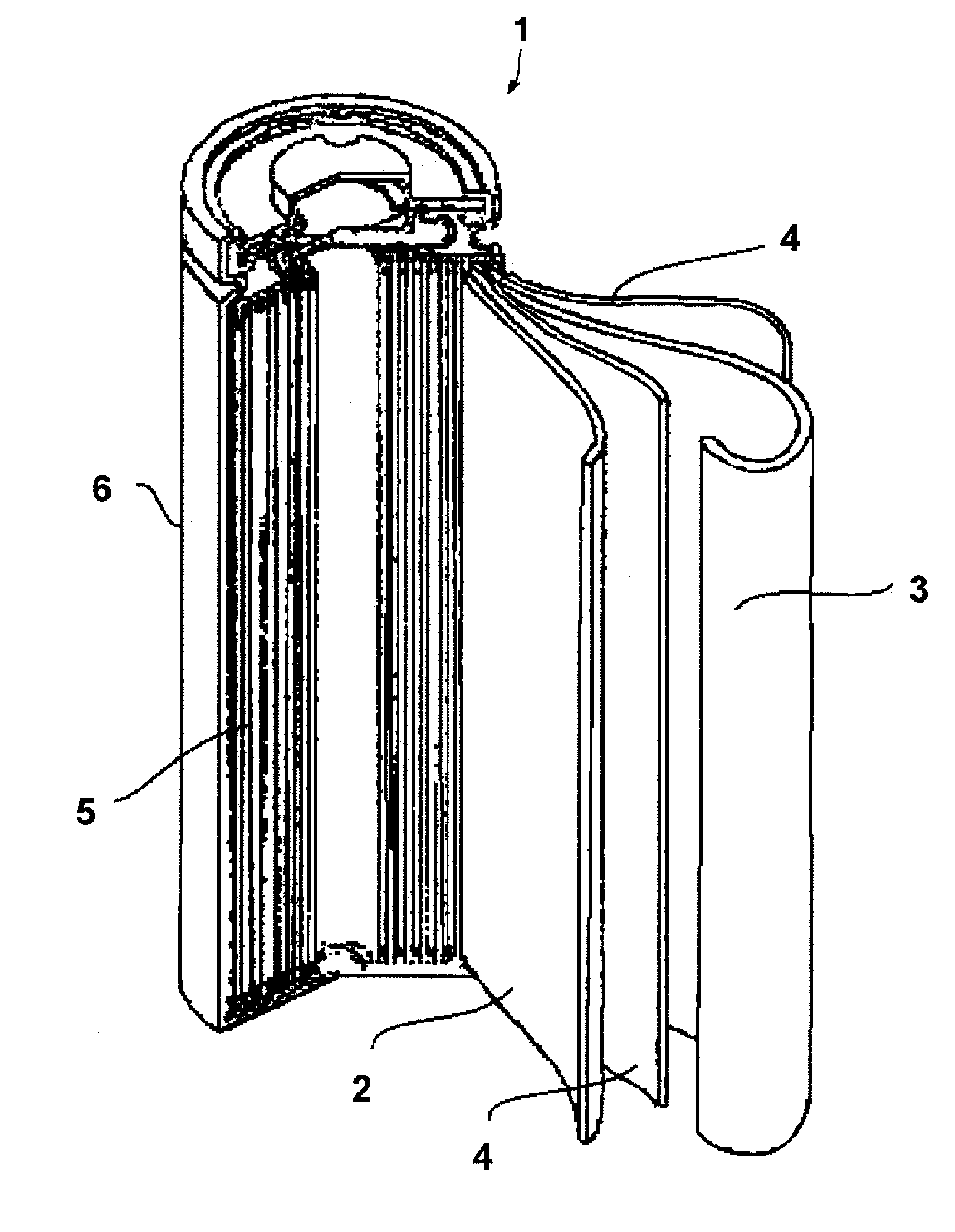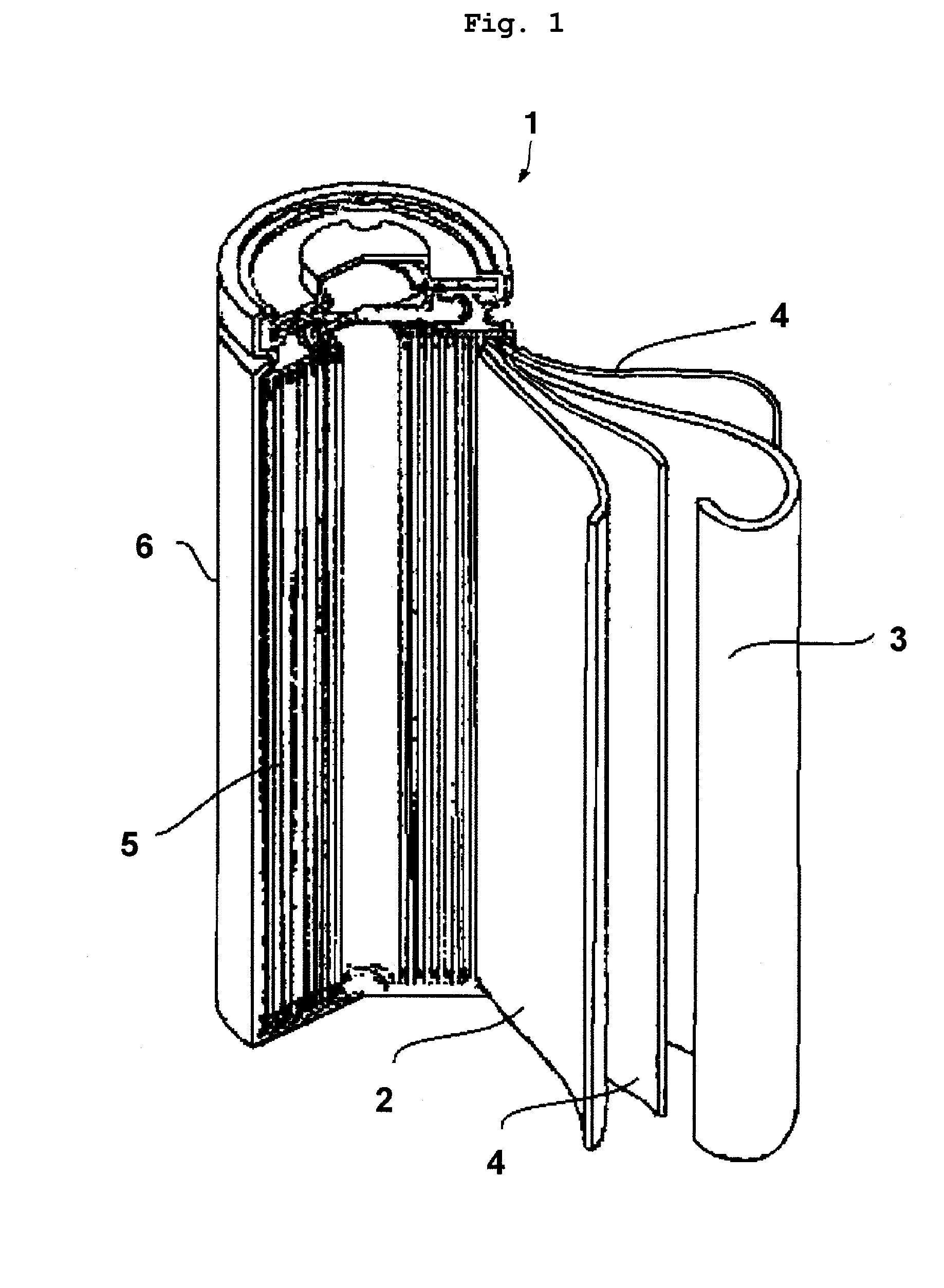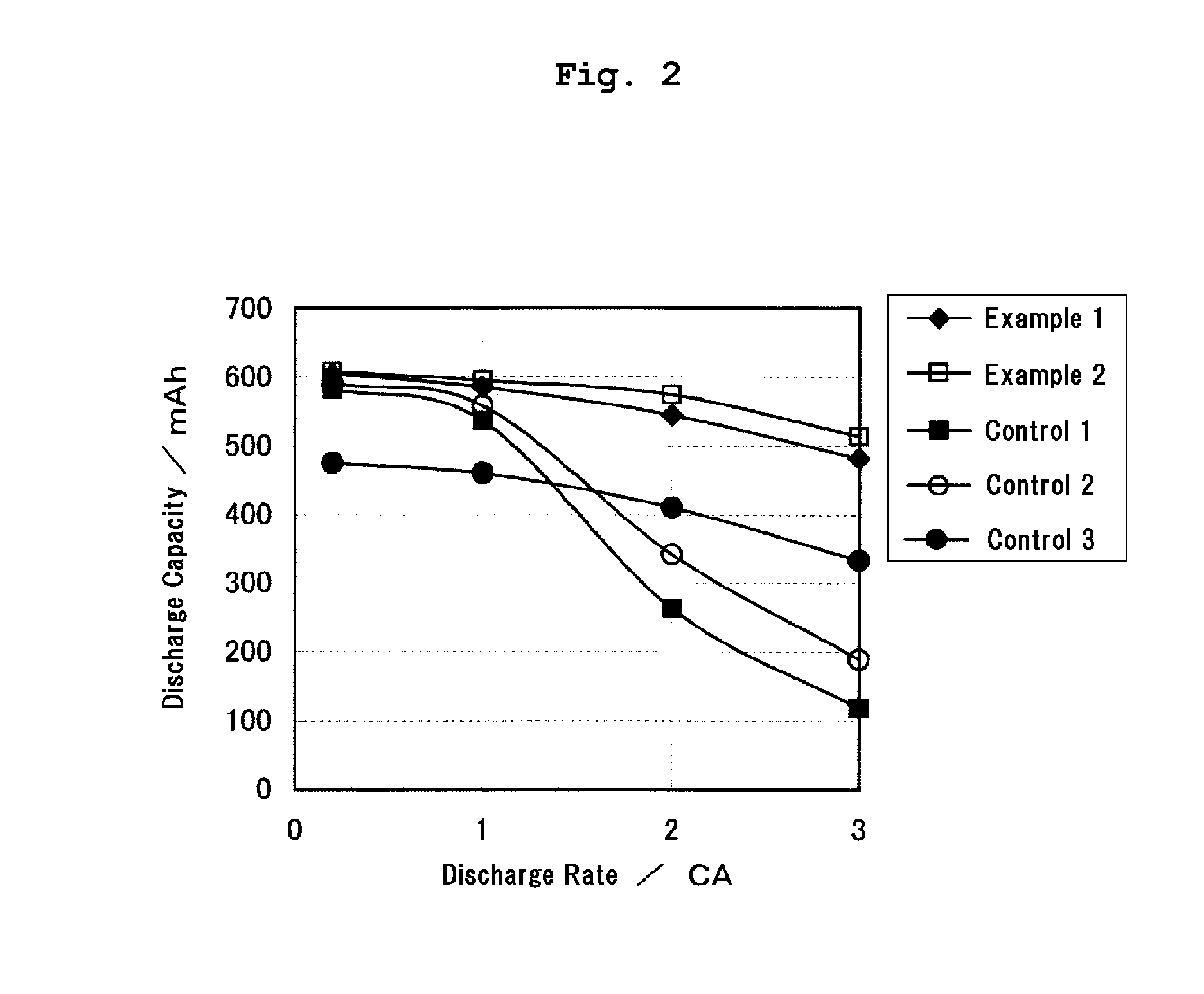Non-aqueous electrolyte battery
- Summary
- Abstract
- Description
- Claims
- Application Information
AI Technical Summary
Benefits of technology
Problems solved by technology
Method used
Image
Examples
example 1
[0027]In Example 1, an aqueous slurry that 94 wt % of the phosphazene compound of a flame retardant and 5 wt % of SBR of a binder are dispersed to CMC aqueous solution into which 2 wt % of CMC of a thickener is dissolved was produced. The flame retardant layer was formed by applying the obtained aqueous slurry directly to the surface of the positive electrode mixture layer and then drying it. The applying amount of the aqueous slurry was adjusted such that the flame retardant layer is set to 10 wt % to the positive mixture layer. The lithium-ion secondary battery 1 was manufactured by using this positive electrode plate 2.
example 2
[0028]In Example 2, the flame retardant layer was formed by applying the same aqueous slurry as Example 1 onto the PET film and drying it, and then, while coming it contact with the surface of the positive mixture layer, transferring it to the positive mixture layer by passing it through the roll press machine. The lithium-ion secondary battery 1 was manufactured by using the obtained positive electrode plate 2.
Control 1
[0029]In Control 1, a NMP solution (non-aqueous slurry) into which 80 wt % of the phosphazene compound of a flame retardant and 20 wt % of PVDF of a binder are dissolved was produced. The flame retardant layer was formed by applying the obtained NMP solution directly to the both surfaces of the positive electrode plate and then drying it. The applying amount of the NMP solution was adjusted such that the flame retardant layer is set to 10 wt % to the positive mixture layer. The lithium-ion secondary battery was manufactured by using this positive electrode plate. Nam...
PUM
 Login to View More
Login to View More Abstract
Description
Claims
Application Information
 Login to View More
Login to View More - R&D
- Intellectual Property
- Life Sciences
- Materials
- Tech Scout
- Unparalleled Data Quality
- Higher Quality Content
- 60% Fewer Hallucinations
Browse by: Latest US Patents, China's latest patents, Technical Efficacy Thesaurus, Application Domain, Technology Topic, Popular Technical Reports.
© 2025 PatSnap. All rights reserved.Legal|Privacy policy|Modern Slavery Act Transparency Statement|Sitemap|About US| Contact US: help@patsnap.com



